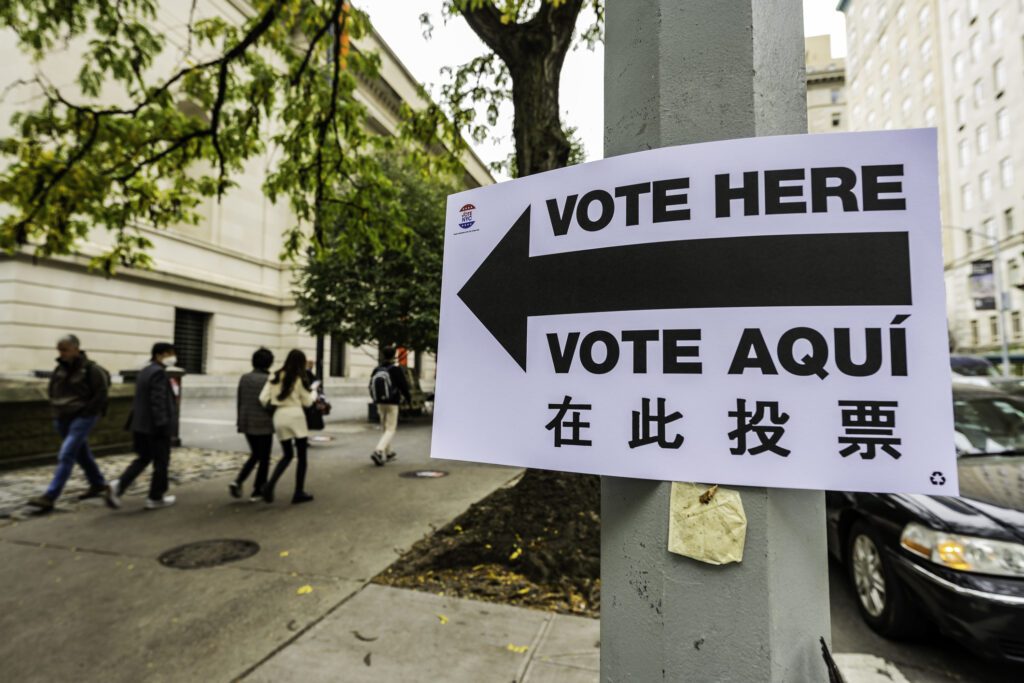The Georgia Runoff Was the Latest Contest Where Early Investment In Latino Voters Paid Off, Activists Say

Image Credit: Christine McCann
From Arizona to Georgia to Florida practitioners say a major takeaway from 2022 when it comes to turning out Latino voters is that early investment pays off.
In fact, that investment targeting low-propensity voters may have helped turn key 2022 races, including the Georgia runoff that saw incumbent Sen. Raphael Warnock (D) defeat Republican challenger Herschel Walker on Tuesday.
“The Latinx community did have an impact on this election,” said Yadira Sanchez, executive director of Poder Latinx, a non-partisan civic and social justice organization. “Not just one organization can take credit for this. It was a coalition of organizations working together and multiple layers of outreach.”
Sanchez said her organization had a team of some 30 canvassers who made more than 36,000 door knocks in Georgia between the midterm and runoff campaign. In addition, the organization made some 200,000 phone calls to voters.
What they found were Latino voters focused on issues like paid leave, women’s rights, climate and inflation.
“We didn’t have a partisan message. We had a message based on issues,” Sanchez said.
“We ran a voter registration campaign early on in the year and those were the voters we were also reaching out to,” she said. “Especially voters who had been registered less than three months. We focused on low- and mid-propensity and new voters.”
They also ran voting PSAs on voting on Telemundo and Univision during the Senate runoff.
“In the past, we have made content in English or content in Spanish, but this was the first time that we had anything in Spanglish,” she said, noting the ad’s blend of Spanish and English. “In the past, we’ve done an English version or a Spanish version.”
Daysi Gonzalez, a partner at Solidarity Strategies who worked on outreach efforts in California and Arizona this cycle, said she also noticed a language change in the creative targeted to Latinos this cycle.
“We’re moving to English creative more often than not now. There are still those Spanish-dominant voters we still have to go after, but Latinos are younger, more transient, they consume both English and Spanish content,” said Gonzalez, who was recently promoted to partner at the Democratic campaign and public affairs firm.
When it came to paid online video, Gonzalez said her shop relied more on English audio with Spanish subtitles.
Still, she added, “even if it’s not Spanish language, the look and feel has to be relatable. Whether that’s using images of Latinos or iconic Latino things — but not pandering. That’s a really fine line. Like using Day of the Dead imagery and it not fitting with the message.”
But like in Georgia, it was early investment that laid the groundwork to higher Latino voter turnout, Gonzalez said. “We saw how successful it is to start early and not just focus on one tactic. The Latino community is making the difference in these races.”
Arizona was another state where early investment in Latino outreach paid off, according to practitioners. To wit, DJ Quinlan, a former state Democratic Party official and partner at Radar Strategies, noted that Latino turnout was up by 15 percent over 2018.
“We are now three elections in a row where the Latino turnout has functionally hit a record and where you’ve had very close races up and down the ballet that the Latino community was likely a deciding factor,” Quinlan recently told the Arizona Republic. “Obviously, not the only deciding factor, but I think a really critical one.”
Latino voters also played a key role in Florida Gov. Ron DeSantis’ reelection. On his way to a resounding win in November, the incumbent flipped the majority Latino Miami-Dade County — the first Republican governor in some two decades to notch that victory in a predominantly Democratic area of South Florida.
“The No. 1 factor why Ron DeSantis became so popular in the state, and among certain segments of the population, was his pandemic policy — from a purely political perspective,” Carlos Curbelo, a former Republican member of Congress, told NBC News.
